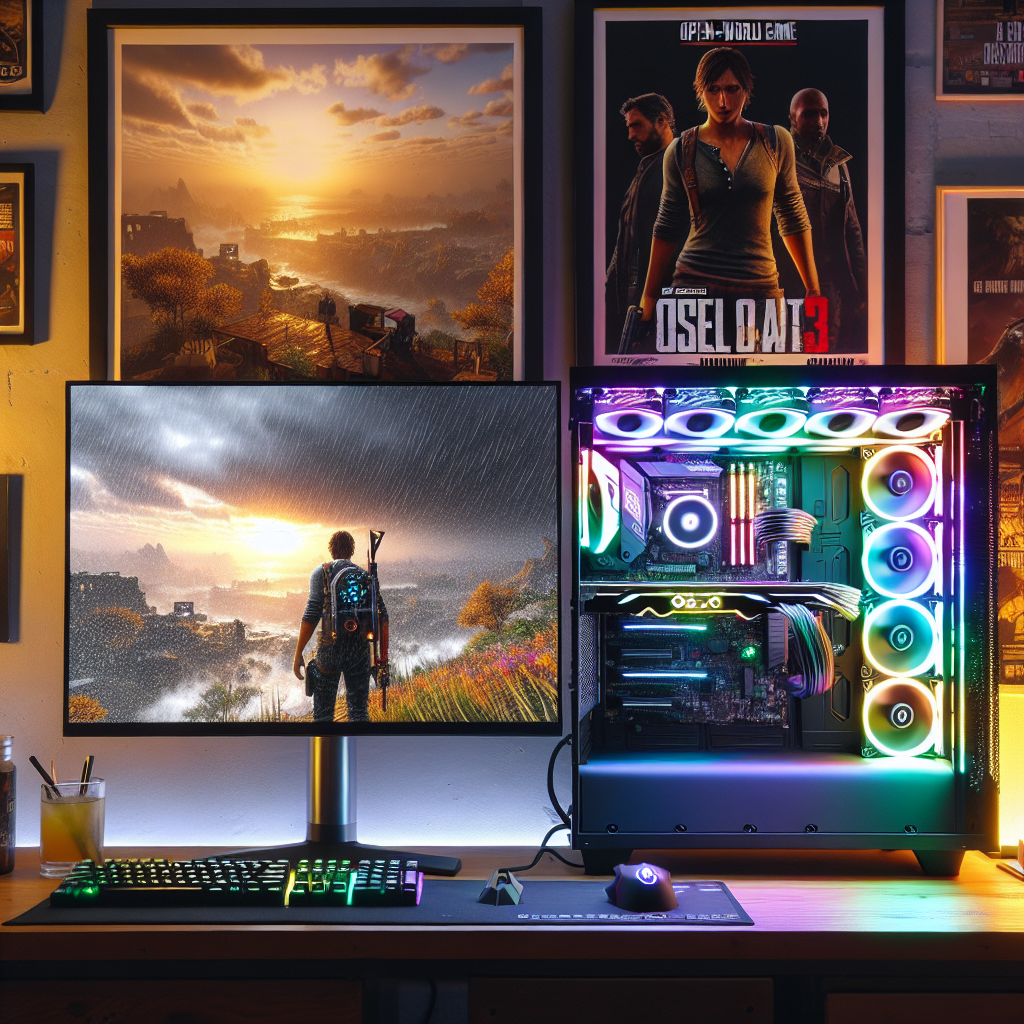Open-world games have gained immense popularity over the years, offering expansive landscapes, interactive environments, and dynamic weather effects that enhance immersion. One of the key technological advancements contributing to this realism is real-time weather simulation. But how do gaming PCs handle these complex simulations?
The Basics of Real-Time Weather Simulation
Real-time weather simulations in open-world games involve algorithms that generate realistic weather patterns, including rain, snow, wind, and fog. These simulations not only add to the visual appeal but also influence gameplay by affecting visibility, movement, and other gameplay mechanics.
Key Components Involved
| Component | Function |
|---|---|
| Graphics Processing Unit (GPU) | Handles rendering of weather effects, ensuring smooth and realistic visuals. |
| Central Processing Unit (CPU) | Executes the algorithms and physics calculations required for dynamic weather changes. |
| Memory (RAM) | Stores data and information related to weather patterns and their impact on the game world. |
| Storage (SSD/HDD) | Keeps essential game files, including textures and weather pattern data. |
Technological Advances in Weather Simulation
The evolution of real-time weather simulation technology has been driven by both hardware advancements and software innovations. Let’s delve into some of these key advancements:
1. Advanced Algorithms
Modern weather simulations use sophisticated algorithms to mimic the chaotic nature of weather systems. These algorithms consider various factors such as temperature, humidity, wind direction, and time of day to create dynamic and believable weather patterns.
2. Particle Systems
Particle systems are employed to generate rain droplets, snowflakes, and other atmospheric particles. These systems calculate how each particle interacts with light and other environmental elements to produce realistic effects.
3. Physically-Based Rendering (PBR)
PBR techniques ensure that weather effects interact with surfaces in a realistic manner. For instance, rain might create wet surfaces that reflect light differently compared to dry surfaces.
4. Environmental Interaction
Weather simulations also take into account how weather interacts with the game environment. Wind might sway trees, snow might accumulate on surfaces, and water bodies could exhibit ripples and waves.
Hardware Requirements for Real-Time Weather Simulation
Handling real-time weather simulations efficiently requires robust hardware. Here’s a breakdown of the key hardware components:
1. Graphics Processing Unit (GPU)
A powerful GPU is essential for rendering complex weather effects without causing frame rate drops. GPUs with advanced shading and tessellation capabilities, such as NVIDIA’s RTX series, are well-suited for this task.
2. Central Processing Unit (CPU)
The CPU is responsible for executing the algorithms that drive weather simulations. Multi-core processors with high clock speeds ensure smooth calculations and seamless transitions between weather states.
3. Memory (RAM)
Adequate RAM is crucial for storing the large amount of data required for real-time simulations. Most modern games recommend at least 16GB of RAM to handle weather and other game mechanics effectively.
4. Storage (SSD/HDD)
Fast storage solutions, such as SSDs, improve loading times and ensure quick access to weather pattern data. This helps in reducing stutters during gameplay.
Challenges in Real-Time Weather Simulation
Despite the advancements, real-time weather simulation in open-world games faces several challenges:
1. Performance Impact
Dynamic weather effects can be resource-intensive, leading to potential frame rate drops and performance issues, especially on lower-end hardware.
2. Consistency and Realism
Achieving a balance between realistic weather effects and gameplay mechanics can be challenging. Ensuring that weather transitions smoothly and impacts gameplay consistently requires meticulous fine-tuning.
3. Scalability
Developers need to ensure that weather simulations run optimally on a wide range of hardware configurations, from high-end gaming PCs to mid-range systems.
Future of Real-Time Weather Simulation
The future holds exciting possibilities for real-time weather simulation in open-world games:
1. Machine Learning
Machine learning algorithms could analyze vast amounts of weather data to create even more realistic and dynamic weather patterns that evolve naturally over time.
2. Real-Time Weather Data Integration
Integration of real-time weather data from the real world into games could offer a unique, ever-changing experience for players, making each gaming session distinct.
3. Enhanced Environmental Dynamics
Future simulations might delve deeper into environmental dynamics, such as erosion, plant growth, and water cycles, further enriching the gaming world’s realism.
Conclusion
Real-time weather simulations add a layer of depth and realism to open-world games, creating immersive and dynamic experiences for players. By leveraging advanced algorithms, powerful hardware, and innovative techniques, gaming PCs are now capable of handling these complex simulations. As technology continues to evolve, the future promises even more breathtaking and realistic weather effects, pushing the boundaries of what’s possible in gaming.

